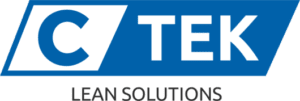Why Some Teams Miss The Mark When Going Lean
Lean management and manufacturing processes can help an organization improve its productivity and revenue by 40 to 60 percent in a short time. Improperly implemented, it can hurt the firm. You can ensure proper implementation by recognizing the mistakes others have made that didn’t lead to success and planning around those.
Key Terms
In any new undertaking, you find new lingo. Many of the terms in this management philosophy go back to its origin in Japanese manufacturing plants. Here are a few terms to help you get started:
Kaizen
• Kaizen, a management technique that creates continuous small improvements over the long-term.
5S
• 5S, a workstation organization tool creating a standardized work area through sorting, setting, shine, standardization and sustained improvement.
Just in Time
• Just in Time, production pieces, such as consumables, parts, and sub-assemblies enter production flow according to the customer demand, not a central schedule.
Continuous Flow
• Continuous Flow, the JIT goal of smooth production progress between work stages with little-to-no inventory buffers.
Implementation Mistakes
Success requires proper planning, implementation and monitoring to ensure that a philosophy of continuous improvement works within your company. The major mistakes that derail implementation include:
• Lack of strategy
• Lack of leadership involvement
• Lack of understanding
• Copycat syndrome
• Thinking of it as a tool
• Lack of customer focus
• Lack of employee engagement
• Lack of employee education
• Conflicting metrics
• Failure to listen
• Lack of standardized procedures
• Shiny object syndrome
Planning for Success
Implementing lean methods resembles any other business undertaking: it requires an explicit strategy including vision, specific goals, milestones and metrics. It should anticipate problems and include recovery strategies and scenarios. It must function in concert with other undertakings, ensuring that your new procedures don’t conflict with existing metrics. Traditional cost accounting measures tend toward a non-lean focus.
Misunderstanding the Philosophy
Lean methods aren’t simply tools to randomly pull from a tool box. They are a philosophy that requires education and understanding for successful implementation. Lack of understanding breeds a lack of support which leads to failure. You’ll use tools like pipe and connector and better ergonomic design to ensure continuous improvement on the production floor. While shiny object syndrome pervades most businesses, to succeed you must cut the thinking that this is a tool or that capital investment solves all problems. Intellectual investment solves problems through a continuous series of problem identifications and problem-solving techniques.
Impediments to Organizational Use
Whether at the top or bottom or middle management, a lack of involvement, education and empowerment leads to failure. Without leadership involvement, the new philosophy fails. At the top, the leaders must firmly implement, inspire following the new philosophy, and petition its use. They must, however, provide flexibility in its implementation.
Conversely, the organization cannot rely solely on a lean champion. To implement these methods successfully requires a critical mass. That critical mass includes all leadership but also extends to employees. Engagement of employees at all levels engenders success. The workforce at various levels know their job best. They experience shifting technology, changing needs, and bottlenecks to productivity firsthand. Engaging their knowledge while educating them formally on the new philosophy and its tenets makes implementation easier. Not listening to their advice can lead to failure.
Change for the Wrong Reason
Implementing kaizen methods to simply increase revenue fails. Copycatting another organizations implementation also fails. This philosophy works only when implementing directly to one’s own systems and recognizing one’s own bottlenecks or material handling issues. One size does not fit all, and successful implementation works most effectively when integrated with local culture. Your focus must reside on your customers, too. This philosophy revolves around providing additional value to the customer, sooner.
You can continuously improve your organization. It takes a combination of standardized procedures, engagement with employees and processes, walking the floor, and understanding that learning never ends.
